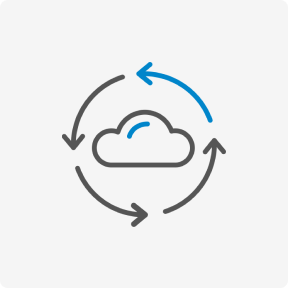However, there remain significant gaps in knowledge for remotely crewed systems where the platforms are not in high demand for steady-state peacetime operations. As these types of remotely crewed systems begin to emerge, the services should conduct controlled experiments to iteratively develop new models for training and operations, including how these units can be optimally staffed, structured, and sustained. The rising costs of military personnel, the increasing levels of automation in modern weapon systems, and the use of more remotely crewed systems create a compelling opportunity to reconsider the officer-enlisted divide within each of the services. As more remotely crewed systems are fielded and new career fields are created to support them, the services should study alternatives for how these systems can be most effectively and efficiently staffed. The functions and skills needed for various positions in crewed platforms—including operators, maintainers, and other unit personnel—may not always translate into similar functions and skills for remotely crewed platforms.

The MQ-1, for example, peaked at a rate of more than 1,300 hours annually per aircraft before the Air Force began replacing it with the more capable MQ-9, which itself peaked at just short of 1,500 hours annually per aircraft. Likewise, the RQ-4 has grown to nearly 1,000 flying hours per aircraft annually. This is significantly more than crewed AISR platforms, which rpa use cases in accounting have typically hovered in the range of 400 to 800 annual hours per aircraft, as shown in Figure 6. The exception for crewed aircraft is the C/MC-12, which surged to more than 1,500 hours per aircraft annually for a few years. Updating RPA bots is time-consuming and it can often be difficult to locate the bots and understand what programs or data they depend on.
Data Management
In order for routine RPAS operations in non-segregated airspace, operators must ensure that they can manoeuvre the aircraft as safely as traditional, manned aircraft pilots. As discussed, separation of RPAS from other cooperative aircraft is technically already feasible, assuming that RPAS have a military IFF transponder equipped. To mitigate or provide an alternate means of compliance to the ICAO Annex 2 ‘See and Avoid’ regulations, two concepts are currently in development, addressing the separation and collision avoidance issue with non-cooperative aircraft. These are Ground-Based Sense and Avoid (GBSAA) and Airborne Sense and Avoid (ABSAA).

While RPA offers several benefits in the enterprise, there are also a few drawbacks. According to experts, these are the top eight pros and five cons of RPA for organizations to consider. We have yet to see a big investment in RPA for IT operations, but that could change as experts identify it as an area that can yield significant benefits for CIOs and their departments. Executives who see RPA as a tactical point-by-point offering rather than a tool that’s part of a holistic strategy will get more limited benefits, according to Martelon. Enterprise leaders who want RPA to support their digitization objectives must have a strategic plan for prioritizing their automation projects and understand how those projects fit into their overarching strategic visions.
Disadvantages of RPAs
In addition, reviewing the process before operation also helps to minimize errors and improve labor productivity. Robotic Process Automation (RPA) is a major part of many organizations’ digital transformation efforts. Experts in automation offer insight on why RPA implementations fail in the enterprise and how IT leaders can avoid them to ensure they’re getting the most out of the technology.
- Business leaders and business advisors said the benefits RPA delivers are driving that growth.
- For example, a business may receive a higher number of orders during a particular time of year.
- We have yet to see a big investment in RPA for IT operations, but that could change as experts identify it as an area that can yield significant benefits for CIOs and their departments.
- This also makes it more difficult for automation as it isn’t designed to create and orchestrate more complex, enterprise-grade processes.
- It also adds costs, which could negate any expected ROI, and introduce new risks.
In many cases, the use of RPA contributes to the identification of process gaps and areas where improvements are still missing. These gaps indicate insufficiency in both human and software resources, and they often reveal the need for advanced and intelligent automation that goes beyond basic RPA software. In areas with strict personal data regulations, the use of RPA provides beneficial opportunities for reducing the number of human touches businesses require to process personal information. When you facilitate this pullback and reduce contact with sensitive data, you can achieve compliance and easier implementation of governance practices. A chief concern that business leaders express about the potential use of RPA tools concerns their impact on operational risk.
What companies and industries use RPA?
RPA initiatives adopted by organizations to reduce headcount and generate more savings often fail due to the large load of changing processes and exception handling. Simply speaking, they often don’t have the resources required to build a robust RPA solution – buying the wrong tool, making wrong assumptions, taking shortcuts, and jeopardizing security and compliance. It is not uncommon for IT departments to write off RPA as a hyped up technology with low value and the potential to threaten stability and security.

The combination of budget constraints and an increasing demand for remotely crewed systems creates an opportunity to break the cycle of growing budgets and declining force structure illustrated in Figures 1–3. However, remotely crewed systems do not directly translate into lower costs if they are staffed and operated in the same way crewed systems are traditionally staffed and operated. One of the keys to breaking the cycle of growing budgets and declining force structure is to reduce personnel requirements and fully leverage the potential of these systems to augment and enhance overall U.S. military capabilities and force structure. Increasing levels of automation are being incorporated into both crewed and remotely crewed systems across the military. For remotely crewed systems, automation can be an important tool for mission tasks where a human-in-the-loop is not needed or may be a disadvantage.
How RPA Fits Into an Intelligent Automation Strategy for Your Business
Drawbacks to assisted automation, explained Fersht and Brain, is that inconsistencies on the desktop setting, such as changing graphics or display settings, can cause the RPA to fail. In addition, sometimes the user’s desktop is locked when the automated steps are being executed. Our comprehensive guide to robotic process automation software is here to help, explaining everything from the basics to analysis of where this rapidly evolving market is headed. For https://www.globalcloudteam.com/ a deeper dive, be sure to click through the hyperlinks on this page to access expertly curated industry tips and analysis, including an in-depth report on how to harness RPA software. The advantages of implementing robotic process automation (RPA) are well known. Reduced operating costs, significant process improvements, redeployment of resources to higher value functions, enhanced customer service, improved productivity and quality … the list goes on.
The data and insights gathered can be used to improve the company’s business processes; hence, its competitive edge in an ever-evolving business environment. According to experts, organizations that don’t first review and, if necessary, reengineer and optimize processes before automating them risk automating problematic processes. This means amplifying inefficiencies, errors and anything else that was wrong with the process in the first place. It also adds costs, which could negate any expected ROI, and introduce new risks. You don’t need to be well versed in computer software or need a tech team.
Create Separate Career Fields for Remote Operators
RPA has an increasing foothold in customer service, especially at the intersection of technology such as AI-powered natural language processing. However, the key benefits in this area today stem from reduced employee involvement with repetitive tasks. Indeed, the ease of getting RPA up and running — one of the automaton tool’s big selling points — is also a major risk and can result in bots run amuck. Without a strong governance plan for RPA bots, companies can end up with a hodgepodge of redundant bots instead of the end-to-end process automation that brings measurable economic impact.

Tasks such as data entry and labeling are often simple and do not require a high level of skill to complete. Therefore, Software Robots will replace humans to solve them better and faster. However, Robotic Process Automation can effectively solve the work in the automated system of the enterprise. If a customer onboarding process requires pulling data from a dozen different sources, and you decide to use an RPA tool, data is still being pulled from a dozen different sources. Sure, the process is being completed in much less time, but the process hasn’t changed.
TOP 10 Dangers Of Digital Health
This proved necessary because pilots progressing through RPA training did not attain the same skills as traditional crewed pilots, and thus the two were not interchangeable. Creating a distinct career field for RPA pilots had the added benefit of making it possible for the Air Force to begin developing a dedicated cadre of remote operators, which creates more opportunities for professional development and advancement within the field. The cost and utilization data analyzed for RPAs point to two key findings. First, remotely crewed systems do not necessarily lead to savings if they are used in missions where there is already a high level of demand for steady-state operations. And relatedly, remotely crewed systems have demonstrated an ability to support significantly higher utilization rates (measured in the annual hours of operation per platform) than crewed systems.